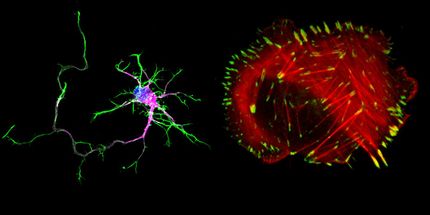The first autism disease genes
Advertisement
The autistic disorder was first described, more than sixty years ago, by Dr. Leo Kanner of the Johns Hopkins Hospital (USA), who created the new label ´early infantile autism´. At the same time an Austrian scientist, Dr. Hans Asperger, described a milder form of the disorder that became known as Asperger Syndrome, characterised by higher cognitive abilities and more normal language function. Today, both disorders are classified in the continuum of ´Pervasive Developmental Disorders´ (PDD), more often referred to as autism Spectrum Disorders (ASD).
Research into the causes, diagnosis, and the treatment of ASD has advanced interactively. Imaging studies have shown that many major brain structures are implicated in autism. Other research is focusing on the role of neurotransmitters such as serotonin, dopamine, and epinephrine. The past decade has been marked by an increased interest in the genetic basis of autism, and recent developments point to genetic factors playing a prominent role in the causes for ASD.
The role of gene mutations in autism
Twin and family studies have suggested an underlying genetic vulnerability to ASD. The estimated prevalence of autism in siblings is 5-10%. A higher recurrence risk in families with autistic subjects (45-times greater than the prevalence in the general population) and higher concordance for autism among monozygotic (60-90%) than dizygotic (0-10%) twins argue for a genetic predisposition to idiopathic autism. These data are interpreted as showing that liability to autism is in large part due to oligogenic inheritance in which a combination of multiple – possibly interacting – susceptibility alleles results in autism. A series of multiple independent whole genome scans and chromosomal abnormality studies have pointed out several candidate regions on chromosomes 2q, 7q, 6q, 15q and sex chromosomes. These regions possess candidate genes that have been screened for mutations or association with autism. In a European multicentre project called PARIS (Paris Autism Sib-pair International Study; coordinated by C. Gillberg & M. Leboyer) a large number of multiply affected families were identified, and several mutations of genes encoding proteins implicated in the process of synapse formation (synaptogenesis) have been described.
In a large international study with a sample of 1.168 multiplex families, an exciting discovery led to the detection of sub-microscopic chromosomal abnormalities (Autism Genome Project, 2007): Copy Number Variant analysis (CNV) highlighted the role of a gene encoding neurexin, which is a tightly linked protein to neuroligin, implicated in synapse formation for glutamate neurons. This revealed a hemizygous deletion of coding exon for neurexin gene for a pair of affected siblings. Accumulating evidence thus points out that neurexin/neuroligin/Shank3 (NLGN3/4, SHANK3, NRXN1) genes are related to autism risk, establishing a direct proof of the association of autism with synaptic abnormalities. Neurexin induces glutamate postsynaptic differentiation in contacting dendrites, while neuroligins induce presynaptic differentiation in glutamate axons. The neurexin-neuroligin link thus appears to be fundamental for glutamatergic synapse formation. Furthermore, aberrant glutamate function is often cited as a cause for autism.
By influencing the process of synapse formation for glutamate neurons, gene mutations predispose individuals to Autism Spectrum Disorders.
Another approach in research of the genetics of autism implies the melatonin pathway. Melatonin is produced in the dark by the pineal gland and is a key regulator of circadian and seasonal rhythms. A low melatonin level was reported in individuals with Autism Spectrum Disorders, but the underlying cause of this deficit was unknown. In several individuals with Autism Spectrum Disorders, deletions of the ASMT-gene were found. This gene, located on the pseudo-autosomal region 1 of the sex chromosomes, encodes the last enzyme of melatonin synthesis. Biochemical analyses performed on blood platelets and/or cultured cells revealed a highly significant decrease in AMST activity and melatonin level in individuals with Autism Spectrum Disorders (Melke et al., 2008).
Recent research indicates that a low melatonin level, caused by a primary deficit in gene activity (AMST), is a risk factor for Autism Spectrum Disorders, and highlights the crucial role of melatonin in human cognition and behaviour.
Original publication: Melke J, Botros H-G, Chaste P, et al. "Abnormal Melatonin Synthesis in Autism Spectrum Disorders." Molecular Psychiatry 2008;13:90-98.




















































